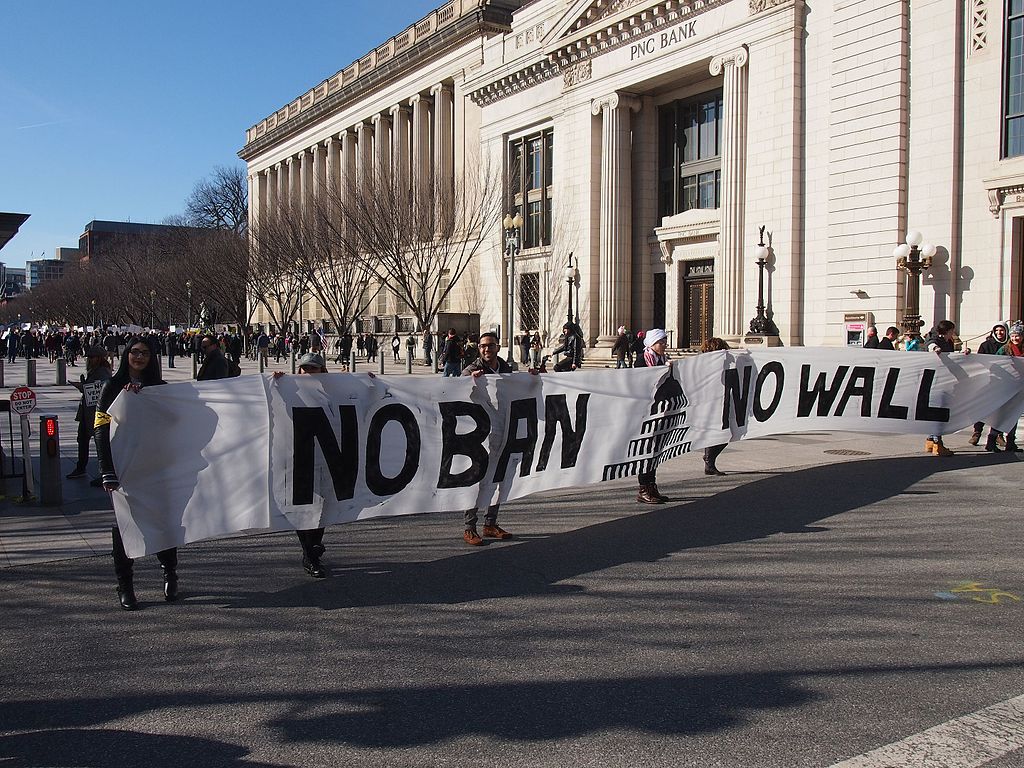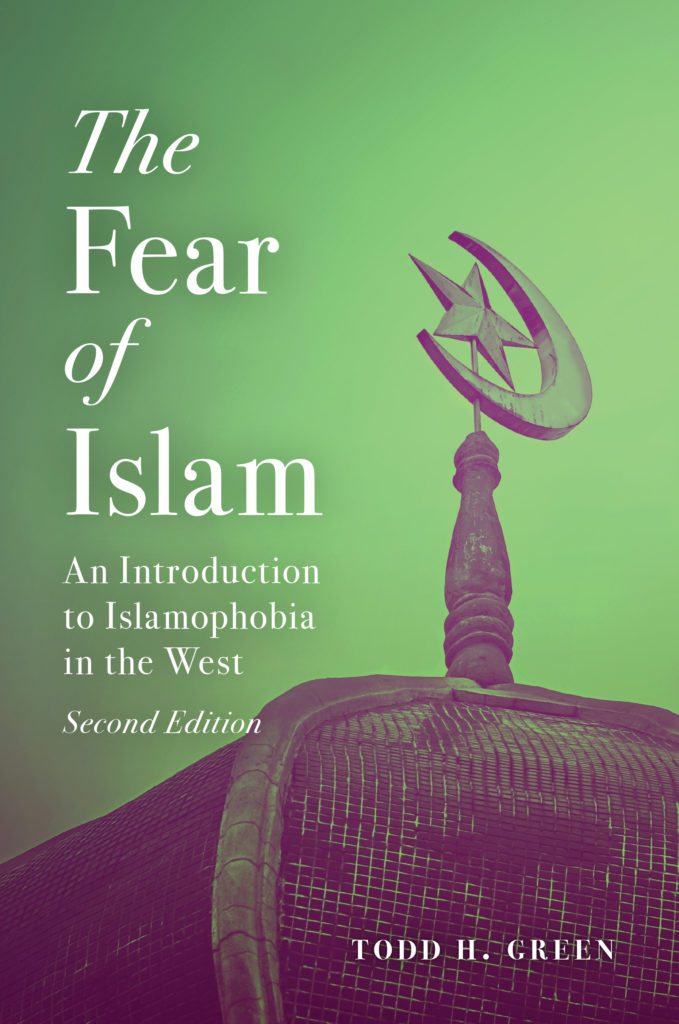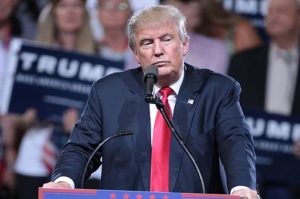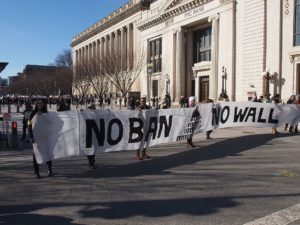
When I first wrote The Fear of Islam: An Introduction to Islamophobia in the West in 2015, I had some doubts about whether it would find an audience. Did scholars, journalists, policy makers, and others in the general public want or need an introductory book on the topic? Four years later, that question has been answered. I am honored that my original book has indeed found an audience and has helped introduce readers to the historical and contemporary manifestations of Islamophobia in Europe and the United States. When my editor at Fortress Press approached me a couple of years ago to ask about a second edition, I jumped at the opportunity.
My desire to revisit and revise The Fear of Islam was driven by two factors. First, by almost every metric, Islamophobia had grown worse since 2015. I wanted to document and highlight these developments and to call attention to the mainstreaming of Islamophobia in Western politics, under the conviction that we can no longer afford to think of Islamophobia as existing only on the political fringes.
Second, my own thinking on Islamophobia had evolved somewhat since the first edition. This wasn’t a radical change, but it did involve revising my original definition of Islamophobia, particularly in terms of Islamophobia’s relationship to racism. It also involved a greater concern for how the most conventional explanation of Islamophobia – the notion that Islamophobia is driven by ignorance of Islam – was not up to the task of explaining why hostility toward Islam and Muslims seemed only to be getting worse.
The Politics of Islamophobia in the Age of Trump
The first edition came out in May 2015, one month before Donald Trump announced his decision to enter the presidential race. Trump had already developed a reputation for promoting racist narratives and the occasional Islamophobic conspiracy theory, but he was not a central figure in the politicization of Islamophobia before he announced his presidential run. For this reason, he doesn’t make a single appearance in the first edition of the book.
Perhaps unsurprisingly, Trump features prominently in the second edition, mostly because Islamophobia was central to his campaign strategy and proved to be an effective means to catapult him to the nomination and ultimately to the White House. In fact, Trump’s Islamophobia dominated the media so much after he entered the race that my editor and I briefly discussed whether he deserved his own chapter in a new edition. This prompted me to consider more carefully how I made sense of the Trump phenomenon. Was Tru

Trump’s record of Islamophobic fearmongering and hysteria is difficult to distill, but I do address the most egregious examples. Trump’s most infamous anti-Muslim proposal came in December 2015, when in the aftermath of the San Bernardino shootings, he called for “a total and complete shutdown of Muslims entering the United States.” Variations of the euphemistically labeled “travel ban,” more accurately known as the “Muslim ban,” would become one of Trump’s highest priorities after entering the Oval Office, though not without significant legal challenges in the courts. But with the help of the Supreme Court in 2018, the ban restricting entry into the United States from a handful of Muslim-majority countries became sanctioned and protected policy.
At a campaign rally in New Hampshire, a man who cast Muslims as terrorist asked Trump: “When can we get rid of them?” Trump did not push back on the questioner but assured the man that he would “be looking at that and many other things.” In other instances, Trump flirted with registration systems and ID cards for Muslims. He falsely accused Muslims of cheering on 9/11 and of failing to report terrorists. He flatly told CNN’s Anderson Cooper, “I think Islam hates us.”
Trump was not the only GOP presidential candidate to instrumentalize Islamophobia in an effort to leverage conservative voters and rally the base. In the aftermath of the Brussels attacks, Ted Cruz called for law enforcement to “patrol and secure Muslim neighborhoods” in the United States. Ben Carson insisted he “would not advocate that we put a Muslim in charge of this nation,” arguing that Muslims were incapable of adhering to the Constitution and sharia at the same time.
“Islamophobic talking points among Republican candidates weren’t new to the 2015-2016 election cycle. Newt Gingrich and Herman Cain both made Islamophobic assertions in the previous election cycle.“
Islamophobic talking points among Republican candidates weren’t new to the 2015-2016 election cycle. Newt Gingrich and Herman Cain both made Islamophobic assertions in the previous election cycle. What was new was the frequency with which overt Islamophobic narratives and proposals were promoted, and the normalization of these narratives in the Republican Party. By 2016, it had become nearly impossible for a viable Republican candidate to make the kinds of claims George W. Bush (in his better moments) made just a decade earlier, including the belief that Muslims and Christians worship the same God. Thanks to Donald Trump, the Republican Party had grown comfortable in its own Islamophobic skin.
Anti-Muslim operatives and organizations, practitioners of what I call “professional Islamophobia,” have seen their influence grow in the age of Trump. Once fringe players who were dismissed by mainstream conservatives, anti-Muslim bloggers and activists, including Pamela Geller, Robert Spencer, Frank Gaffney, and Brigitte Gabriel, entered the mainstream of conservative politics during the 2015-2016 election cycle and began to exercise significant influence.
Gaffney, a prominent birther who routinely promotes the conspiracy theory that the Muslim Brotherhood has infiltrated the highest echelons of the federal government, served as Ted Cruz’s national security adviser during Cruz’s presidential campaign. Gaffney also partnered with Kellyanne Conway, currently President Trump’s counselor, to conduct biased polling on American Muslims. Steve Bannon, former chief strategist for the White House, called Spencer, a man whose writings inspired the Islamophobic and xenophobic worldview of Norwegian mass murder Anders Breivik, “one of the top two or three experts” in the war against “fundamental Islam.” John Bolton, Trump’s National Security Advisor until September 2019, wrote the foreword to a book in 2010 co-authored by Geller and Spencer. Mike Pompeo, Trump’s Secretary of State, received the National Security Eagle Award from Brigitte Gabriel’s ACT for America, one of the largest anti-Muslim hate organizations in the country. The marriage between the 1.5 billion dollar Islamophobia industry and the Republic Party has been fully consummated in the age of Trump.

All of this, mind you, has happened in a relatively short period of time, beginning soon after the publication of the first edition of The Fear of Islam. The second edition bears witness to this mainstreaming of Islamophobia and to the more deliberate and successful efforts by political actors to wield Islamophobia for votes and money.
The Politics of Islamophobia in the Age of Brexit
In many ways, Europe has taken the lead on politicizing anti-Muslim racism. Many far right parties have been warning about an “Islamic threat” and a “fifth column” for decades, and their political fortunes by and large have only been improving in recent years. In the Netherlands, Geert Wilders of the Party for Freedom, who campaigned in 2017 on promises to prohibit Islamic headscarves and to ban the Qur’an, finished a respectable second in his bid to unseat Prime Minister Mark Rutte. That same year, Marine Le Pen of the National Rally Party also came in second in France’s presidential elections in spite of (or perhaps because of) her calls for banning headscarves in public spaces and outlawing halal slaughter of animals.
Across Europe, far right parties with anti-Muslim, anti-immigrant platforms have increased their political power and representation. They have become one of the three largest parliamentary parties in a number of countries, including Austria, Germany, the Netherlands, Sweden, and Switzerland. Their influence in parliamentary politics has led more centrist politicians to cast Muslims as a suspect population or otherwise to distance themselves from multiculturalism.
The mainstreaming of Islamophobia in Europe is best seen in Brexit, the vote in 2016 for Britain to leave the European Union. While economic factors, including decades of industrial decline and working-class alienation, influenced the Brexit vote, so did prejudice toward immigrants and Muslims (often conflated in European political discourse). An Economist/Ipsos poll in the lead-up to the Brexit vote revealed that 50 percent of the public saw immigration as the most significant issue facing Britain, 23 percentage points ahead of the economy.
Far-right politicians such as Nigel Farage of the UK Independence Party were quick to translate anxieties over immigration into a “Muslim problem.” “There is an especial problem with some of the people who’ve come here and who are of the Muslim religion who don’t want to become part of our culture,” Farage complained in a 2015 interview, “I think perhaps one of the reasons the polls show an increasing level of concern is because people see a fifth column living within our country, who hate us and want to kill us.” Farage’s fears over an “Islamic threat” to British and European culture have been echoed by powerful politicians in the United States. Reflecting on Muslim immigration from the Middle East and North Africa, Donald Trump told a British tabloid in 2018, “You are losing your culture.”
Evidence suggests that the kinds of narratives peddled by Farage and Trump resonated with a portion of pro-Brexit voters. According to a survey conducted by YouGov and Cambridge University, approximately one-third of Brexit voters expressed concerned that Muslim immigration is part of a plot to Islamicize Britain. Even more disturbing, the anti-Muslim anxiety accompanying the Brexit campaign, combined with high-profile terrorist attacks in Britain due to the rise of ISIS, contributed to an atmosphere which witnessed unprecedented levels of hate crimes against Muslims between 2015 and 2017.
The political mainstreaming of Islamophobia in Britain, as elsewhere in Europe, shows no signs of fading. On December 12, 2019, the Conservative Party, whose leader Boris Johnson campaigned on a promise to “get Brexit done,” secured almost 44 percent of the vote and obtained its biggest parliamentary majority since Margaret Thatcher’s 1987 election victory. This development is all the more significant because of the party’s track record of promoting Islamophobia. This includes Johnson, who in the aftermath of the London 7/7 bombings argued “Islam is the problem” and who insisted that Islamophobia is “a natural reaction” for anyone reading the Qur’an.
Johnson’s Islamophobic rhetoric has not lessened in the age of Brexit. Just last year, he compared women wearing burqas to “letter boxes” and “bank robbers.” Such statements did not tank his campaign but arguably aided it. As the party’s former chairperson, Sayeeda Warsi, observed back in 2011, Islamophobia in Britain has “passed the dinner-table test,” and not just in the ranks of her own party.
Rethinking Islamophobia
Beyond calling attention to the political mainstreaming of Islamophobia, I wanted to take advantage in a second edition to call more explicit attention to the racism driving Islamophobia on both sides of the Atlantic. That Islamophobia is best understood as a form of racism is commonly accepted in scholarship on the topic, but for the broader public, and even among some well-meaning civil liberties organizations and allied movements, linking the two proves difficult.

In the first edition of The Fear of Islam, I tried to walk a fine line between acknowledging that ignorance is a factor in Islamophobia while also maintaining that Islamophobia is best understood as a form of cultural racism. This balancing act continues in the second edition, in part because I recognize that there is an ongoing need to correct misunderstandings about Islam that are prevalent in public discourse. I also recognize that ignorant stereotypes frequently serve a more insidious political function: distracting Western nations and their majority populations from their own moral failings on issues such as violence or gender inequality. For these reasons, I still believe there’s a place for addressing ignorance of Islam in the study of Islamophobia.
“Ignorance is not the fundamental cause of Islamophobia. It’s racism that drives Islamophobia. It’s racism that gives Islamophobia its legs and its life. It’s racism that fuels the ignorance of Islam that abounds in Western societies.”
But scholars of Islamophobia must be clear. Ignorance is not the fundamental cause of Islamophobia. It’s racism that drives Islamophobia. It’s racism that gives Islamophobia its legs and its life. It’s racism that fuels the ignorance of Islam that abounds in Western societies. This is a point I wanted to make much more strongly and explicitly. For this reason, I revised my original definition of Islamophobia in an effort to lift up the centrality of racism, defining it as follows in the second edition: Islamophobia is the fear of and hostility toward Muslims and Islam that is rooted in racism and that results in individual and systemic discrimination, exclusion, and violence targeting Muslims and those perceived as Muslim.
The revised definition has several advantages for framing subsequent discussions in the book. It directs attention to the ways that Muslims, and those “read” as Muslim, are imagined in racialized terms. It paves the way for helping readers understand how Muslims are dealt with collectively as a suspect population, one that is deemed deserving of discrimination if not violence. It sheds light on how Islamophobia functions as a facet of white supremacy. It plugs readers into the larger scholarly and political debates on Islamophobia that have taken shape since the first edition was published, from the “Islamophobia Is Racism” syllabus project to recent efforts in Britain to legally define Islamophobia as racism.
“I revised my original definition of Islamophobia in an effort to lift up the centrality of racism, defining it as follows in the second edition: Islamophobia is the fear of and hostility toward Muslims and Islam that is rooted in racism and that results in individual and systemic discrimination, exclusion, and violence targeting Muslims and those perceived as Muslim.”
Most importantly, defining Islamophobia as racism moves readers away from simplistic assumptions that just a little more “Islam 101” education will turn the tide against Islamophobia. I don’t reject out of hand the need for greater literacy on Islam. Educating the public on Islam can make a difference. The Institute for Social Policy and Understanding, for example, found in its 2019 survey that knowledge of Islam serves as a strong predictor for who will harbor less prejudice toward Muslims.
Yet we must also recognize that the “Islam 101” approach has limits, particularly in light of the orchestrated efforts by politicians and professional Islamophobes to manufacture anti-Muslim hatred for financial and political gain. These efforts have taken root and intensified in recent years even as we have seen the proliferation of outstanding scholarly books and online resources on Islam, not to mention some outstanding organizations dedicated to educating the public on Islam. That’s no coincidence. The most prolific forms of Islamophobia, the forms that do the most damage to Muslims and those perceived as Muslim, are those that political actors consciously generate to maintain a particular geopolitical order, one that benefits white and white Christian populations in Western nations.
“The most prolific forms of Islamophobia, the forms that do the most damage to Muslims, are those that political actors consciously generate to maintain a particular geopolitical order, one that benefits white and white Christian populations in Western nations.”
I don’t yet know if I will have the privilege of offering a third edition of The Fear of Islam. If that opportunity does arise, I have no doubt that both the political mainstreaming of Islamophobia and the systemic racializing and securitizing of Muslim populations will continue to feature prominently in the book. I expect that a third edition will take heed of the 2020 presidential election cycle and the Islamophobic strategies adopted and adapted by Trump and his surrogates in their quest for re-election. Some of these strategies have already been on display in the past year, including casting Muslims as inherently anti-Semitic and stirring up hostility toward outspoken Muslim women of color, including Rashida Tlaib and Ilhan Omar. I also anticipate a third edition will need to determine whether progressive politicians have finally found their voice and their moral footing in response to Islamophobia, or whether ambivalence if not outright complicity continues to characterize their relationship to Islamophobia.
What remains to be seen is whether a third edition will be able to reflect back on the age of Trump and Brexit as the peak of anti-Muslim racism, or if this current age is only a harbinger of something far worse to come.

